The Origins and Explosion of Mog Coin: From Internet Joke to Market Dark Horse
Mog Coin (MOG) was initially launched in July 2023 as a cat-themed meme coin on the Ethereum blockchain, and early on its market cap was under $50 million—widely regarded as “a joke in the crypto community.” However, 2024 proved to be a turning point: its market cap skyrocketed from $50 million in February to $1.5 billion by December, a surge of over 5,500%, placing it among the top 150 cryptocurrencies.
This explosive growth was closely linked to the spread of a satirical slogan during the U.S. presidential campaign—“Make America Mog Again”—which pushed the token up by 20% in a single day. After Coinbase announced the listing of MOG in December 2024, its price soared further, with its market cap nearing $1 billion, making it the first meme coin explicitly tied to a metaverse narrative.
Unlike traditional animal-themed meme coins such as Popcat, MOG’s core innovation is converting “humorous culture” into a “virtual consumption tool.” Its roadmap outlines three major objectives: virtual economy integration, NFT branding, and token utility. This narrative fills a market gap and has attracted investors interested in metaverse economics.

Technical Expansion and Metaverse Integration: MOG’s Three Core Strategies
Multi-Chain Compatibility and Fitness Data Mining
In Q1 2025, MOG launched a cross-chain initiative, integrating with Ethereum, Base, and Solana. It introduced liquidity pools and supports multi-chain asset exchanges. Users can convert their daily step counts or calories burned into MOG tokens, turning healthy behaviors into virtual economic rewards and enhancing the token’s utility.
Metaverse Partnership
MOG has partnered with sandbox-style game “Cozy Grove,” allowing players to use tokens to purchase virtual land and items. Additionally, it has launched a limited-edition “Mog Guardians” NFT series, which grants holders exclusive privileges like access to metaverse concerts. This “token as identity” model drives MOG’s transformation from a speculative tool to a digital identity certificate.
Community-Driven and Anti-Speculation Design
Forty percent of tokens are distributed via community voting, and 5% of trading fees are used for buyback and burn to curb whale manipulation. TikTok challenges (such as MogDance) have attracted Generation Z users, and daily discussions on the community Discord average 23,000 messages.
Controversies and Risks: The Rift between Cultural Consensus and Capital Dynamics
Legal Ambiguity of Copyright Disputes
The original image creator, Phillip Banks, has repeatedly opposed the commercialization of MOG and in December 2024 filed a complaint with the SEC for copyright infringement, which caused the token to plunge 65% in one day. Although the project claims to have secured secondary creation rights, the unclear legal boundaries continue to threaten its long-term viability.
Market Volatility and Contract Vulnerabilities
In February 2025, a flash loan attack on the XBIT platform exposed vulnerabilities in the MOG contract, allowing an attacker to arbitrage $2.4 million and triggering extreme price fluctuations. A copycat project, Worried Guy (WORRIEDGUY), briefly reached a market cap of $10 million before collapsing, exposing the market’s fragility.
Regulatory Pressure under High Scrutiny
The U.S. SEC is assessing whether meme coins should be classified as securities; if MOG is deemed an unregistered security, it may be delisted from exchanges. Furthermore, the EU MiCA regulations mandate KYC for users holding over $10,000 worth of tokens, conflicting with the project’s “anonymous freedom” ethos.
Industry Implications: Restructuring the Meme Coin Paradigm and Competitive Landscape
From “Animal Frenzy” to a Dual-Driven Model of “Culture + Consumption”
MOG’s rise signifies a differentiation in the meme coin sector. Similar examples include the Latin American music community token SAMBA (which can be exchanged for concert tickets) and the fitness-themed token GIGA (which employs exercise mining). In contrast, Popcat, lacking utility, has seen its market cap shrink from $1.3 billion to $770 million—underscoring the effectiveness of MOG’s model.
Challenges and Opportunities in Community Governance
Current DAO voting participation is only 12%, with major decisions still dominated by early investors, deviating from the “decentralized” promise. However, MOG’s pilot “cultural token” regulatory framework (in collaboration with the Monetary Authority of Singapore) may pave a new path for governance reform.
Future Challenges: Keys to Building a Sustainable Ecosystem
-
Copyright Compliance: Whether the project can purchase the image rights via DAO voting or reach a settlement with Phillip Banks will be crucial for the cultural symbol’s legitimization. Failure could result in a fate similar to that of CHILLGUY, where culture is overly capitalized.
-
Technical Implementation: Issues such as the stability of cross-chain liquidity pools and the verification of fitness data on-chain need to be addressed. If unresolved, the token risks reverting to a bubble.
-
Balancing Regulation and Anonymity: Designing a mechanism that harmonizes anonymity with compliance under MiCA will determine its entry into mainstream financial systems. The project plans to allocate 30% of revenue to a legal compliance fund as one potential strategy.
If MOG successfully overcomes these bottlenecks, it could establish a new closed loop in the meme coin arena—combining virtual consumption, token incentives, and community co-creation. Otherwise, it might become another example of an over-idealized failure in crypto history. For investors, tracking the progress of Ethereum cross-chain integration in Q2 2025 and growth in the NFT ecosystem is strategically more important than chasing short-term price fluctuations.



